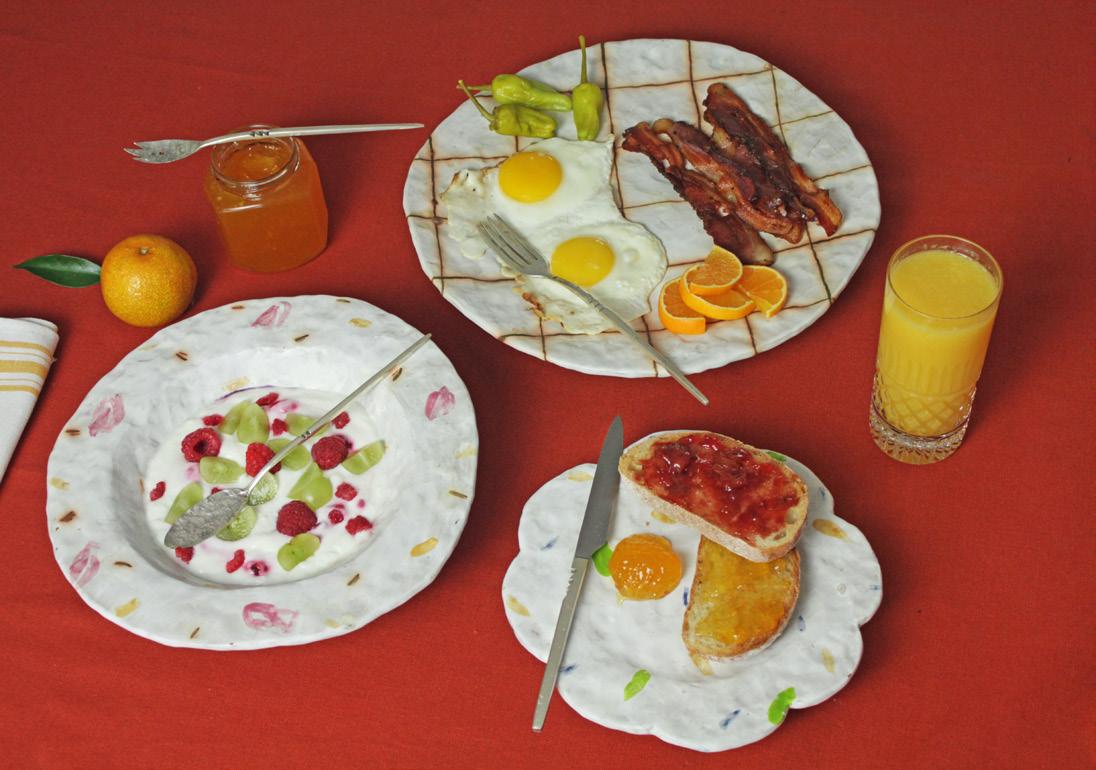
3 minute read
6 in the 6: DesignTO Festival
from The Collection by Harvey Kalles Real Estate Ltd., Brokerage | Winter 2021
by The Collection by Harvey Kalles Real Estate Ltd., Brokerage
Since 2011, DesignTO has been bringing communities together to celebrate design. Today, with over 100 exhibits, DesignTO Festival is Canada’s largest annual design festival, celebrating design as a multidisciplinary form of creativity.
Despite Covid-19, this year’s festival is still on with a wide range of programming that can be experienced virtually, or socially distanced, by appointment or from outdoors. To get you started, here are our top 6 picks for 2021.
The DesignTO Festival takes place January 23–31. For all details, visit www.designto.org/2021-festival-schedule
1 A Chunk of Silver and Some Mud
Former classmates Nicolas Soni and Gillian Maradyn-Jowsey use their immeasurable appetites for objects and food to cook up a dinner service to feast one’s eyes upon. This service will consist of cast and forged silverware made by Toronto-based sculptor Soni, and hand-built ceramic dishes made by Lunenburg-based ceramicist Maradyn-Jowsey.
Robust in form, yet soft in sensibility, these ceramics are made for everyday dining and special occasions, alike. The cutlery draws from Early-Modern English flatware and carpentry tools, emphasizing intuition and playfulness. These implements have been crafted with consideration to their material heritage, while reimagining the conventions around them.

A Chunk of Silver and Some Mud, Gillian Maradyn-Jowsey, Nicolas Soni
2 Le Plus Habité
Le Plus Habité is a term coined by architect AugustinCharles d’Aviler in the 17th century to describe rooms that were meant to be the most inhabited, in contrast to display rooms. In this piece, the term gains a new meaning, as the viewers are pushed to question the purpose of the space and its livability.
The living room has traditionally been used as a display of status, a space to entertain, and at times, for the temporary keeping of the dead. Brandon Latcham and Shira Yavor aim to blur the lines between human and non-human environments. A stop-motion film, created in collaboration with Rashmi Baird, echoes this concept and acts as a dream seeking to bridge the gap between domestic and organic environments.

Le Plus Habité, Shira Yavor, Brandon Latcham, Rashmi Baird
3 Quarantype
Filling a need to leave her home and to explore, artist Lisa Stuve started to document the typography of various older apartment buildings.
“It became a treasure hunt of unique discoveries, some I happened upon, while others I tracked down online. The charm and character from decades past led me to daydream of what these apartments must look like inside, or how they appeared in their prime. These signs show a lost typographic art form, one I wish that new developments in the city would bring back.” — Lisa Stuve

Quarantype, Lisa Stuve
4 Living Will
Living Will places the future death of loved ones at the forefront of our consciousness. It reminds us that despite death’s inevitability, we can make the time that remains meaningful and prepare for the grieving process.
Over the past two years, the Dying series has attracted over 5,000 attendees, 26 speakers, and 29 exhibiting artists and designers. In its third year, Dying, will continue to offer a chance to creatively engage in conversation about fragility, death, dying, loss and grief, through the lens of art and design.

RVLTR Studio
5 Volatile Ecologies: Architectural Apparatuses for Earthly Survival
Volatile Ecologies is a design exhibition examining the environmental degradation in the industrial waterfront of Buffalo, New York, through the lens of scenario planning and prototype making. Since their original use in the 1910s, these sites have been contaminated for decades with oil spills, benzene run-offs, coal tars, ammonia liquors, wastewater, and toxic airborne emissions. Bringing together design, technology and material culture, the exhibition depicts an alternative future of the heavily polluted environment through design apparatuses and speculative drawings.

Volatile Ecologies, Zherui Wang, Michael Vahrenwald
6 10490
10490 is a series of seats made as part of an investigation into how objects exist as intricate relations between material, marking, and meaning.
“The process began with harvesting wood from my family’s property in London, Ontario. For the past year, I have made a seat every two to four weeks. These were the ones that made it. The series of seats reflect a learning process, an embodied knowledge that develops when engaging with material. Each object speaks of the time and place in which it was made, and embodies the vitality of the trees that made them.” — Elizabeth Lenny

10490, Elizabeth Lenny



